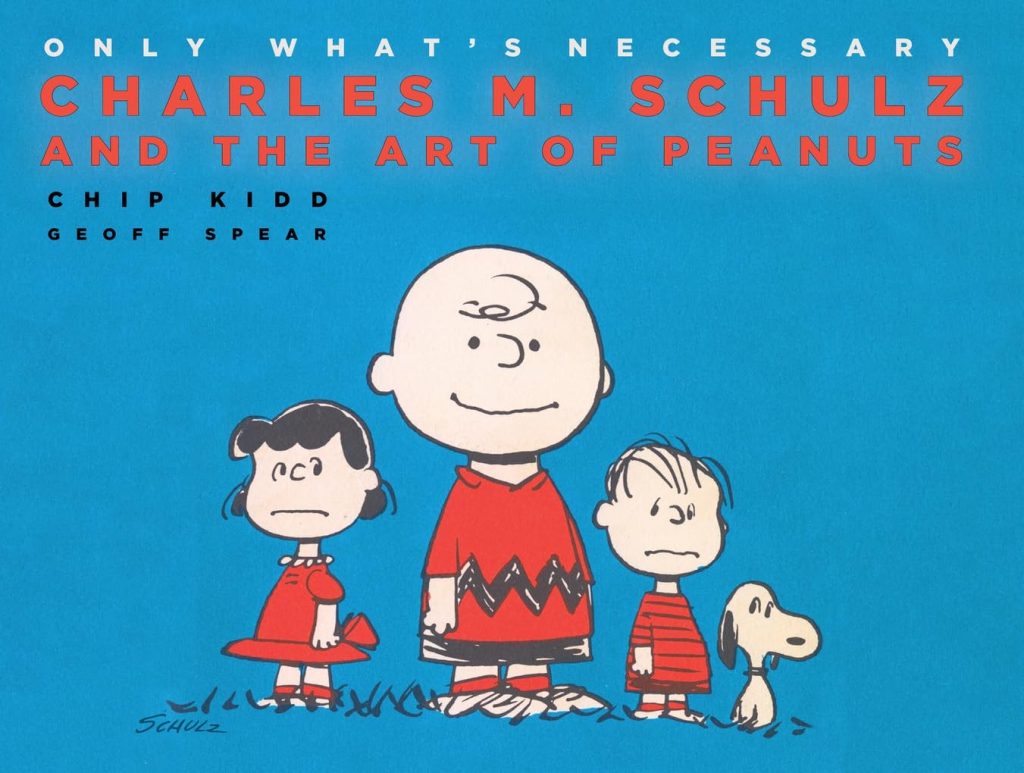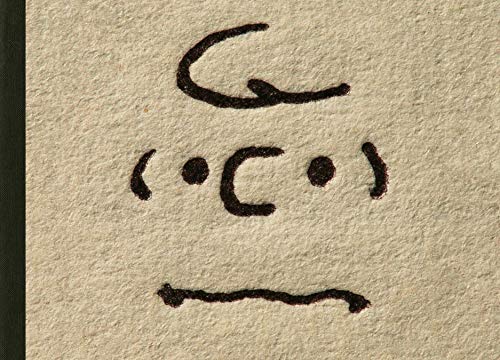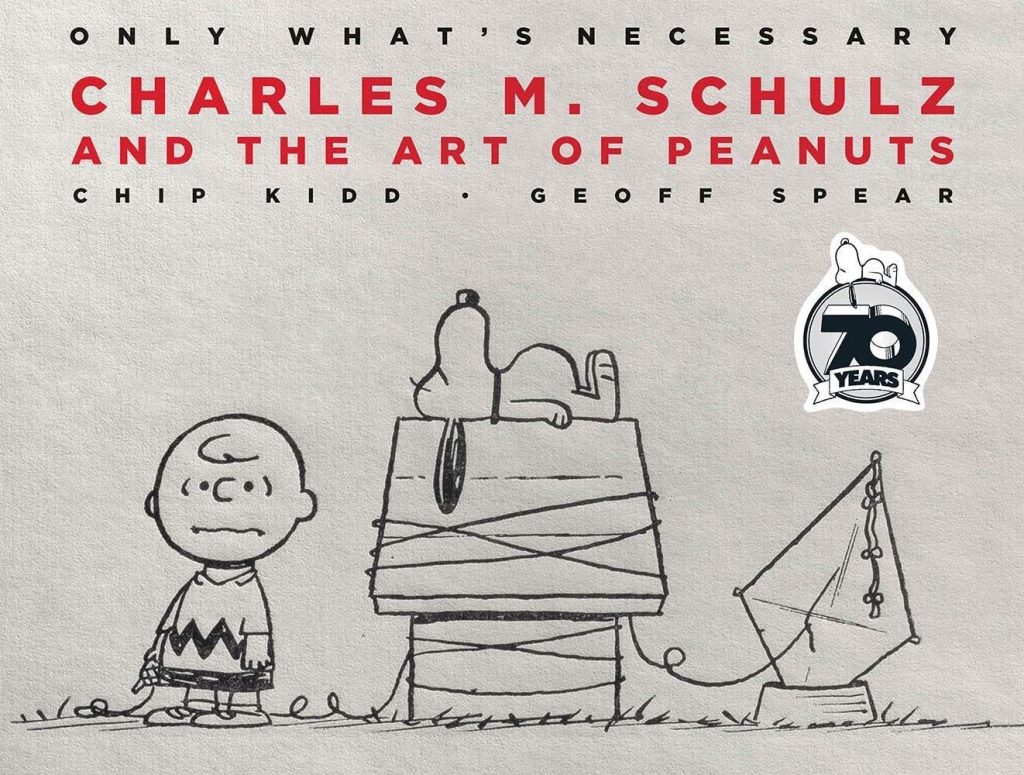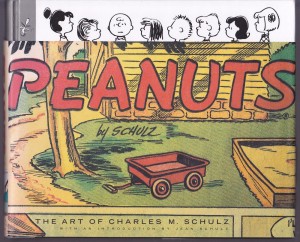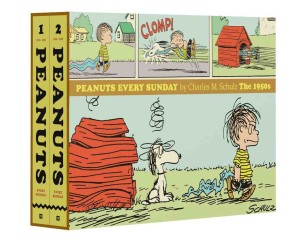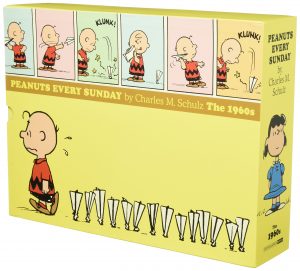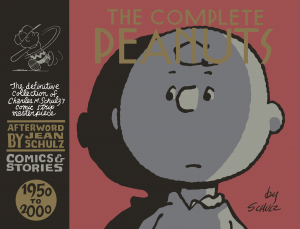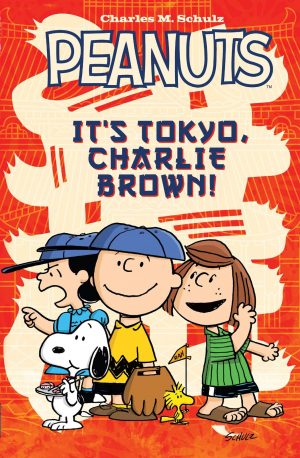Review by Woodrow Phoenix
“Good cartooning is basically good design. A cartoon character who looks good to you is a cartoon character who has been designed properly. … I have discovered that, because of the type of humor in Charlie Brown, the drawings must remain simple–very simple. And I rarely do any backgrounds. Keeping it all very simple is the key here.” That’s Charles M. Schulz, quoted on the intro page of Only What’s Necessary: Charles M. Schulz and the Art of Peanuts.
This is the second book by designer Chip Kidd and photographer Geoff Spear to explore the vast repository of original art, paintings, working proofs, merchandise, and printed matter that makes up the Peanuts archive belonging to the Schulz family in Santa Rosa, California. Their first deep dive in 2001, The Art of Charles M Schulz contained photographs of inked strips and pencil layouts, scrapbook pages, sketches, notes and unused work, books, toys and reproductions of old printed pages taken from newspapers and magazines. Much of this material had been seen by very few outside the Schulz studio or was vintage and near-impossible to find anymore, making it a compelling purchase for fans wanting a glimpse into the process behind a truly world-famous phenomenon.
With the sheer volume of material from a fifty-year career, the almost four hundred pages of that book were very much the tip of an immense iceberg. So in 2015 they published the results of a second trawl through the archive. This time, their selections were reproduced much larger, at twice the size of the first book in a 304 x 228 mm hardcover, the same generous proportions as the Peanuts Every Sunday collections. The first edition is now out of print (though currently not hard to find) so to coincide with and/or draw attention to the 70 years since Charlie Brown’s first appearance in a newspaper in 1950, a new edition was published in 2020: Only What’s Necessary 70th Anniversary Edition: Charles M. Schulz and the Art of Peanuts.
Introduced by text from Wimpy Kid author Jeff Kinney, from Jean Schulz, and Karen Johnson, museum director at the Charles M. Schulz Museum and Research Centre, this book reveals a wealth of treasures. We have Schulz’s very first published cartoon when he was 14, a drawing of the family dog, Spike; his wartime scrapbook with photos, letters and drawings made while overseas; many Li’l Folks originals, some unpublished including the first drawing of Charlie Brown and Snoopy; the braille version of the Happiness is a Warm Puppy book from 1962; colouring books and board games. There’s the full correspondence between Harriet Glickman and Schulz that led to the creation of Franklin; the only four existing and never printed Hagemeyer strips; covers and pages from many book collections, advertising and other work including for his local little league baseball team in Sebastopol, California; and hundreds of photographed strips and tearsheets from 1950 right up to the last strip published in 2000. Paige Braddock, Schulz’s assistant reveals just how that final Peanuts sign-off happened, with more drawings, letters, notes and other fascinating behind-the-scenes bits of art and information. It’s all very thrilling to encounter and almost impossible to stop flipping through pages of discoveries once you begin. Dedicated Schulz fans will find this book just as indispensable as the previous collection.
